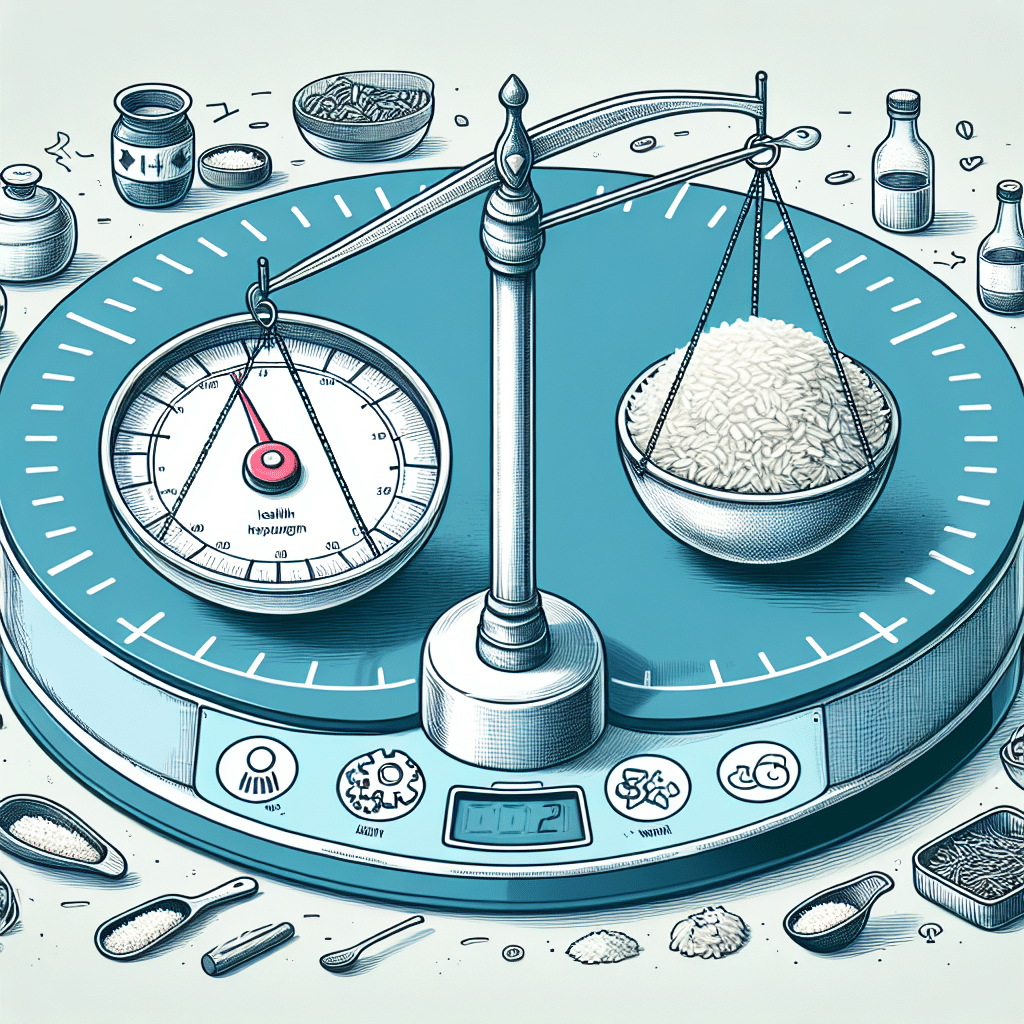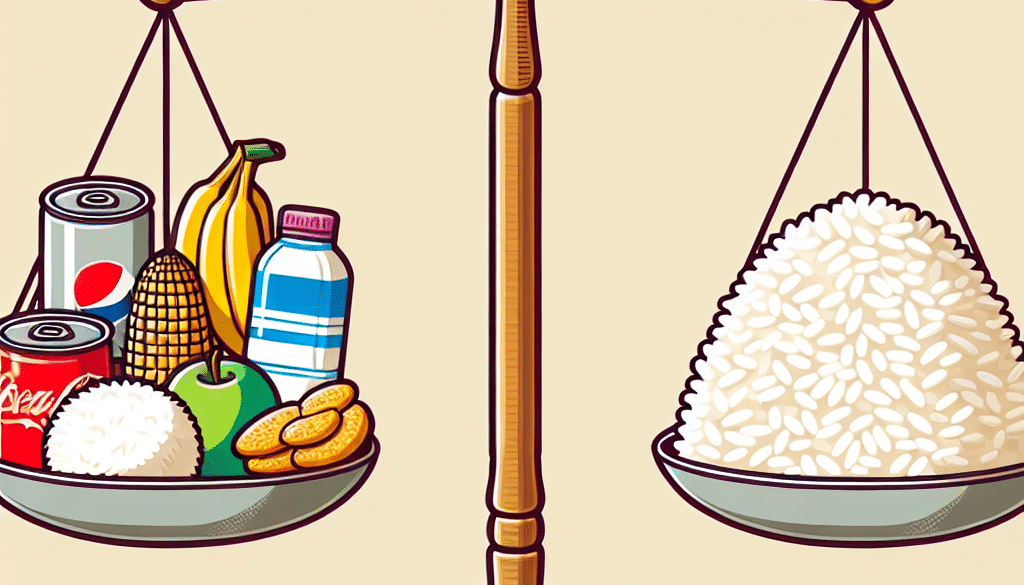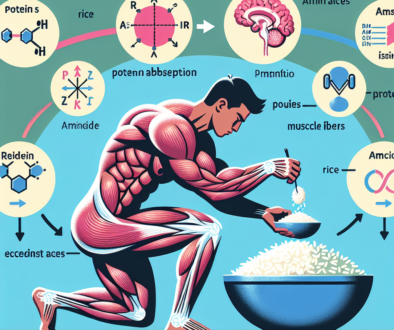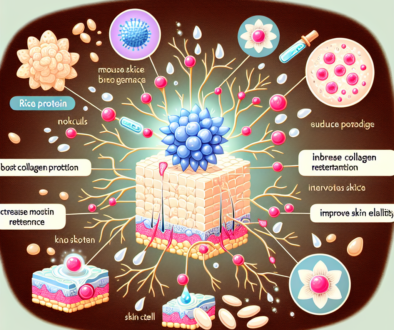How Fattening Is Sticky Rice?
-
Table of Contents
- Sticky Rice Nutrition: Understanding Its Caloric Impact
- What Makes Sticky Rice Different?
- Caloric Content of Sticky Rice
- Nutritional Profile of Sticky Rice
- Comparative Studies and Statistics
- How to Enjoy Sticky Rice in a Balanced Diet
- Conclusion: The Verdict on Sticky Rice and Weight Gain
- Enhance Your Diet with ETprotein’s High-Quality Protein Products
Sticky Rice Nutrition: Understanding Its Caloric Impact

Sticky rice, also known as glutinous rice or sweet rice, is a staple in many Asian cuisines, particularly in Southeast Asia. It’s known for its unique texture that’s chewy and, as the name suggests, sticky. This type of rice is often used in a variety of dishes, from savory meals to sweet desserts. However, with the increasing awareness of healthy eating habits, many people are concerned about the nutritional content of sticky rice, particularly its caloric density and potential for weight gain. In this article, we’ll explore how fattening sticky rice can be, backed by research and nutritional data.
What Makes Sticky Rice Different?
Before delving into the specifics of its caloric content, it’s important to understand what sets sticky rice apart from other types of rice. Sticky rice is a type of short-grain rice that contains a higher amount of amylopectin, a type of starch that gives it its sticky texture when cooked. Unlike long-grain rice, which tends to be fluffier and less cohesive, sticky rice clumps together, making it ideal for dishes where it needs to be picked up with chopsticks or formed into shapes.
Caloric Content of Sticky Rice
When it comes to calories, sticky rice is comparable to other types of white rice. A typical serving size of cooked sticky rice, which is about 1 cup (or approximately 200 grams), contains around 200 calories. However, the way sticky rice is prepared and consumed can significantly affect its overall caloric impact.
- Preparation Method: Sticky rice is often soaked in water before cooking, which can lead to an increase in its volume and a slight decrease in calorie density per serving.
- Serving Size: In many traditional dishes, sticky rice is served in larger portions than other types of rice, which can lead to a higher caloric intake.
- Accompaniments: Sticky rice is frequently paired with rich sauces, coconut milk, or fried toppings, which can add substantial calories to a meal.
Nutritional Profile of Sticky Rice
Aside from calories, it’s important to consider the overall nutritional profile of sticky rice. It is primarily a source of carbohydrates, with a small amount of protein and negligible fat content. Sticky rice also lacks dietary fiber, which is important for digestive health and can help with satiety, potentially leading to overeating. The lack of fiber, combined with the high glycemic index of sticky rice, can cause rapid spikes in blood sugar levels, which may not be ideal for individuals with diabetes or those trying to manage their weight.
Comparative Studies and Statistics
Research comparing different types of rice and their effects on health can provide insights into how fattening sticky rice might be. For instance, studies have shown that consuming white rice, which has similar properties to sticky rice, is associated with weight gain and an increased risk of type 2 diabetes. However, these studies often do not isolate sticky rice but rather look at white rice consumption as a whole.
Statistics from dietary surveys indicate that in countries where rice is a dietary staple, such as Thailand or Laos, the prevalence of obesity is lower compared to Western countries. This suggests that rice, including sticky rice, can be part of a balanced diet without necessarily leading to weight gain. However, lifestyle factors and overall dietary patterns also play a significant role in these outcomes.
How to Enjoy Sticky Rice in a Balanced Diet
For those who love sticky rice but are concerned about its fattening potential, there are ways to enjoy it as part of a healthy diet:
- Control Portion Sizes: Stick to a reasonable serving size and be mindful of the total caloric intake from the entire meal.
- Balance with Other Foods: Pair sticky rice with lean proteins, vegetables, and healthy fats to create a more balanced meal.
- Limit High-Calorie Add-Ons: Be cautious with sauces and toppings that can significantly increase the calorie count.
- Choose Whole-Grain Alternatives: Occasionally substitute sticky rice with brown or black sticky rice to increase fiber intake.
Conclusion: The Verdict on Sticky Rice and Weight Gain
Sticky rice can be part of a balanced diet without being overly fattening. Its caloric content is similar to other types of white rice, and it’s the portion size and accompaniments that largely determine its impact on weight. By practicing portion control, pairing it with nutritious foods, and moderating high-calorie additions, sticky rice can be enjoyed without excessive concern over its potential to contribute to weight gain.
Enhance Your Diet with ETprotein’s High-Quality Protein Products
If you’re looking to complement your diet with high-quality protein sources, consider ETprotein’s range of organic and vegan protein products. Their offerings, such as Organic rice protein and pea protein, provide excellent alternatives to animal-based proteins, supporting muscle growth and maintenance while catering to various dietary preferences.
ETprotein’s products are characterized by their neutral taste and allergen-free attributes, making them a versatile addition to any meal. Whether you’re involved in sports nutrition, weight management, or simply seeking to improve your overall health, ETprotein has a protein solution for you.
For those who enjoy sticky rice and other carbohydrate-rich foods, incorporating ETprotein’s protein powders can help balance your macronutrient intake and support your dietary goals. To learn more about their products and how they can fit into your lifestyle, contact ETprotein today.
About ETprotein:
ETprotein, a reputable protein and L-(+)-Ergothioneine (EGT) Chinese factory manufacturer and supplier, is renowned for producing, stocking, exporting, and delivering the highest quality organic bulk vegan proteins and L-(+)-Ergothioneine. They include Organic rice protein, clear rice protein, pea protein, clear pea protein, watermelon seed protein, pumpkin seed protein, sunflower seed protein, mung bean protein, peanut protein, and L-(+)-Ergothioneine EGT Pharmaceutical grade, L-(+)-Ergothioneine EGT food grade, L-(+)-Ergothioneine EGT cosmetic grade, L-(+)-Ergothioneine EGT reference grade and L-(+)-Ergothioneine EGT standard. Their offerings, characterized by a neutral taste, non-GMO, allergen-free attributes, with L-(+)-Ergothioneine purity over 98%, 99%, cater to a diverse range of industries. They serve nutraceutical, pharmaceutical, cosmeceutical, veterinary, as well as food and beverage finished product distributors, traders, and manufacturers across Europe, USA, Canada, Australia, Thailand, Japan, Korea, Brazil, and Chile, among others.
ETprotein specialization includes exporting and delivering tailor-made protein powder and finished nutritional supplements. Their extensive product range covers sectors like Food and Beverage, Sports Nutrition, Weight Management, Dietary Supplements, Health and Wellness Products, and Infant Formula, ensuring comprehensive solutions to meet all your protein needs.
As a trusted company by leading global food and beverage brands and Fortune 500 companies, ETprotein reinforces China’s reputation in the global arena. For more information or to sample their products, please contact them and email sales(at)ETprotein.com today.














